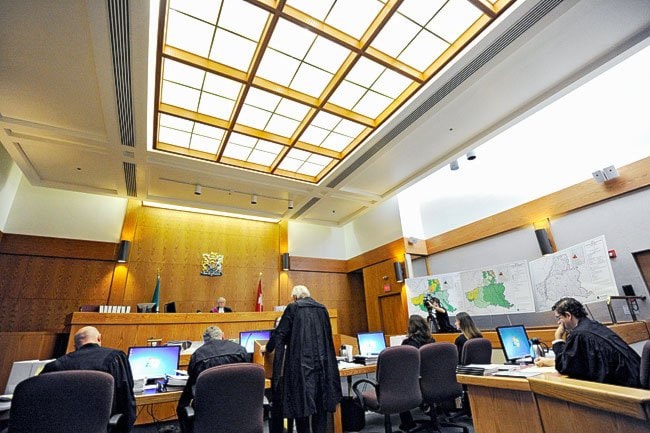The trial to determine the fate of the Peel watershed began this morning.
The public gallery was filled with chiefs, elders, bureaucrats and reporters.
Members of the public were forced into a nearby courtroom to watch by live feed. Seats filled spaces both in front of and behind the bench, with standing room on the sides and in the back.
The trial has garnered attention in national and international media in recent weeks.
At the heart of the issue is how much control First Nations retain over the management of Crown lands after signing land claims agreements with Canada and the Yukon.
When First Nations gave up aboriginal title to 97 per cent of the watershed, they gained the right to participate fully in decisions about how that land is used, argued Thomas Berger, counsel for the plaintiffs.
Berger commissioned the Mackenzie Valley Pipeline Inquiry in the 1970s and is a famed aboriginal rights lawyer.
The plan recommended by the Peel Watershed Land Use Planning Commission, which arose from a constitutionally-protected process described in the Umbrella
Final Agreement, should be declared approved and binding on all parties, said Berger.
That land use planning process took seven years and recommended that 80 per cent of the Peel watershed be off limits to new development, at least for now.
The Yukon government didn’t like that outcome, and drafted its own plan, calling for protection in just 29 per cent of the area.
The Tr’ondek Hwech’in, the First Nation of Nacho Nyak Dun and local conservation groups launched the suit.
The Northwest Territories-based Gwitchin Tribal Council stands as an intervenor in the case.
John Hunter, legal counsel for the Yukon government, argued in his brief introductory statement that the Yukon government maintains ultimate authority over the land in question, just as First Nations retain authority over their settlement lands.
The plaintiffs want the final recommended plan to be declared as law as a remedy to the dispute.
If the court does nothing, the government’s plan will remain in effect, as it is today.
Justice Ron Veale suggested that if other alternate remedies exist, the plaintiffs would be wise to present them.
If the court were to rule some third option that had never been suggested by the plaintiffs, such as sending the plan back to the planning commission, counsel for the
Yukon government would think he was “way out in outer space,” Veale reasoned.
The proceedings are scheduled to continue through Friday this week.
Contact Jacqueline Ronson at jronson@yukon-news.com
